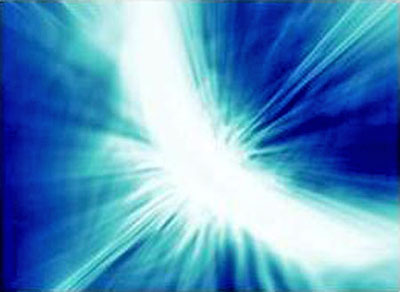|
We believe in death because we have been
told we will die. We associate ourselves with the body, and we know
that bodies die. But a new scientific theory suggests that death is
not the terminal event we think.
One mainstream explanation, the “many-worlds” interpretation, states that each of these possible observations corresponds to a different universe (the ‘multiverse’).
A new scientific theory - called biocentrism - refines these ideas.
There are an infinite number of universes, and everything that could possibly happen occurs in some universe. Death does not exist in any real sense in these scenarios. All possible universes exist simultaneously, regardless of what happens in any of them.
Although individual bodies are destined to self-destruct, the alive feeling - the ‘Who am I?’- is just a 20-watt fountain of energy operating in the brain.
But this energy doesn’t go away at death.
One of the surest axioms of science is
that energy never dies; it can neither be created nor destroyed. But
does this energy transcend from one world to the other?
Regardless of the choice you, the observer, make, it is you who will experience the outcomes that will result.
The linkages between these various histories and universes transcend our ordinary classical ideas of space and time. Think of the 20-watts of energy as simply holo-projecting either this or that result onto a screen.
Whether you turn the second beam
splitter on or off, it’s still the same battery or agent responsible
for the projection.
The same thing applies for time. You can’t see anything through the bone that surrounds your brain. Everything you see and experience right now is a whirl of information occurring in your mind.
Space and time are simply the tools for
putting everything together.
In the end, even Einstein admitted,
Immortality doesn’t mean a perpetual
existence in time without end, but rather resides outside of time
altogether.
For a few moments I felt like I was transcending the provincialism of time.
I thought about the 20-watts
of energy, and about experiments that show a single particle can
pass through two holes at the same time. I could not dismiss the
conclusion: Christine was both alive and dead, outside of time.
The wedding was one of the most
important days in Christine’s life. Since no one else from our side
of the family showed, Christine asked me to walk her down the aisle
to give her away.
She was thrown from the car and landed in a banking of snow.
She never knew that her liver had been
ripped in half and blood was rushing into her peritoneum.
Whether it’s flipping the switch for the Science experiment, or turning the driving wheel ever so slightly this way or that way on black-ice, it’s the 20-watts of energy that will experience the result.
In some cases the car will swerve off the road, but in other cases the car will continue on its way to my sister’s dream house. Christine had recently lost 100 pounds, and Ed had bought her a surprise pair of diamond earrings.
It’s going to be hard to wait,
but I know Christine is going to look fabulous in them the next time
I see her.
|


